 Technology peripherals
Technology peripherals
 AI
AI
 Stable Diffusion 3 technical report released: revealing the same architecture details of Sora
Stable Diffusion 3 technical report released: revealing the same architecture details of Sora
Stable Diffusion 3 technical report released: revealing the same architecture details of Sora
Very soon, the technical report of Stable Diffusion 3, the “new king of Vincentian graphics”, is here.
The full text has a total of 28 pages and is full of sincerity.

"Old rules", the promotional poster (⬇️) is directly generated with the model, and then shows off the text rendering ability:
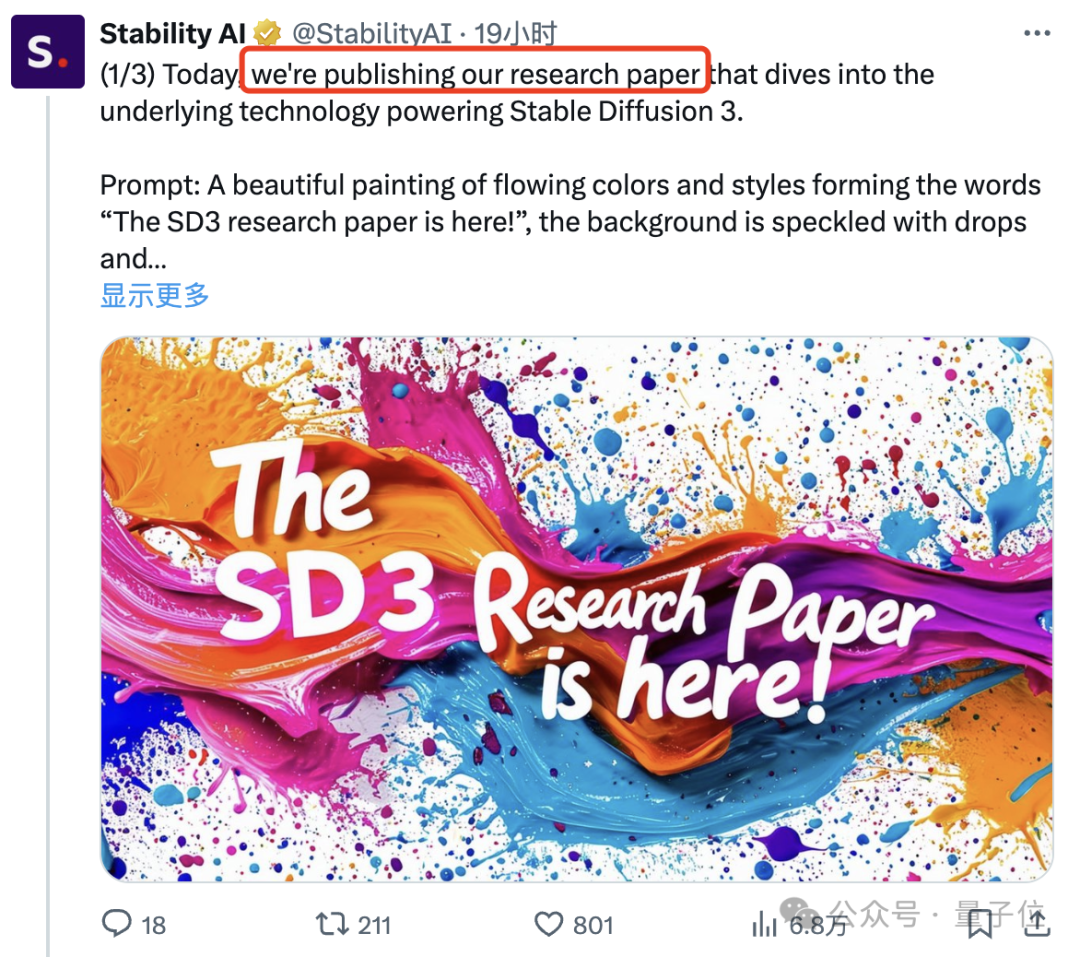
So, how does SD3 light up its text and command following skills, which are stronger than DALL·E 3 and Midjourney v6?
Technical report reveals:
It all relies on the multi-modal diffusion Transformer architecture MMDiT.
By applying different sets of weights to image and text representations, a more powerful performance improvement than previous versions was achieved, which is the key to success.
Let’s open the report to see the details.
Fine-tuning DiT to improve text rendering capabilities
At the beginning of the release of SD3, the official revealed that its architecture has the same origin as Sora and is a diffusion Transformer-DiT.
Now the answer is revealed:
Since the Vincent graph model needs to consider both text and image modes, Stability AI goes one step further than DiT and proposes a new architecture MMDiT.
The "MM" here refers to "multimodal".
Like previous versions of Stable Diffusion, the official uses two pre-trained models to obtain suitable text and image representations.
The encoding of text representation is done using three different text embedders (embedders), including two CLIP models and a T5 model.
The encoding of the image token is completed using an improved autoencoder model.
Since text and image embedding are conceptually not the same thing, SD3 uses two sets of independent weights for these two modes.
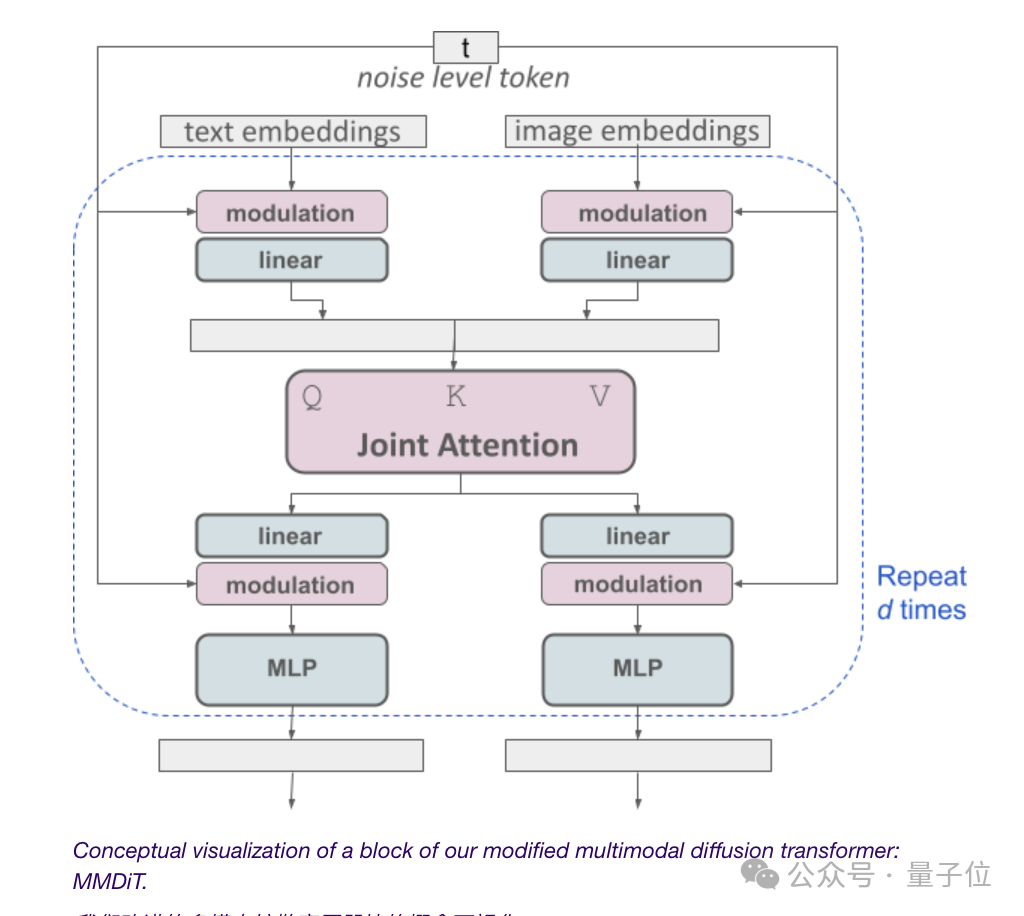
(Some netizens complained: This architecture diagram seems to start the "Human Completion Project", um, yes, some people just "saw "Neon Genesis Evangelion" I just clicked on the information to enter this report")
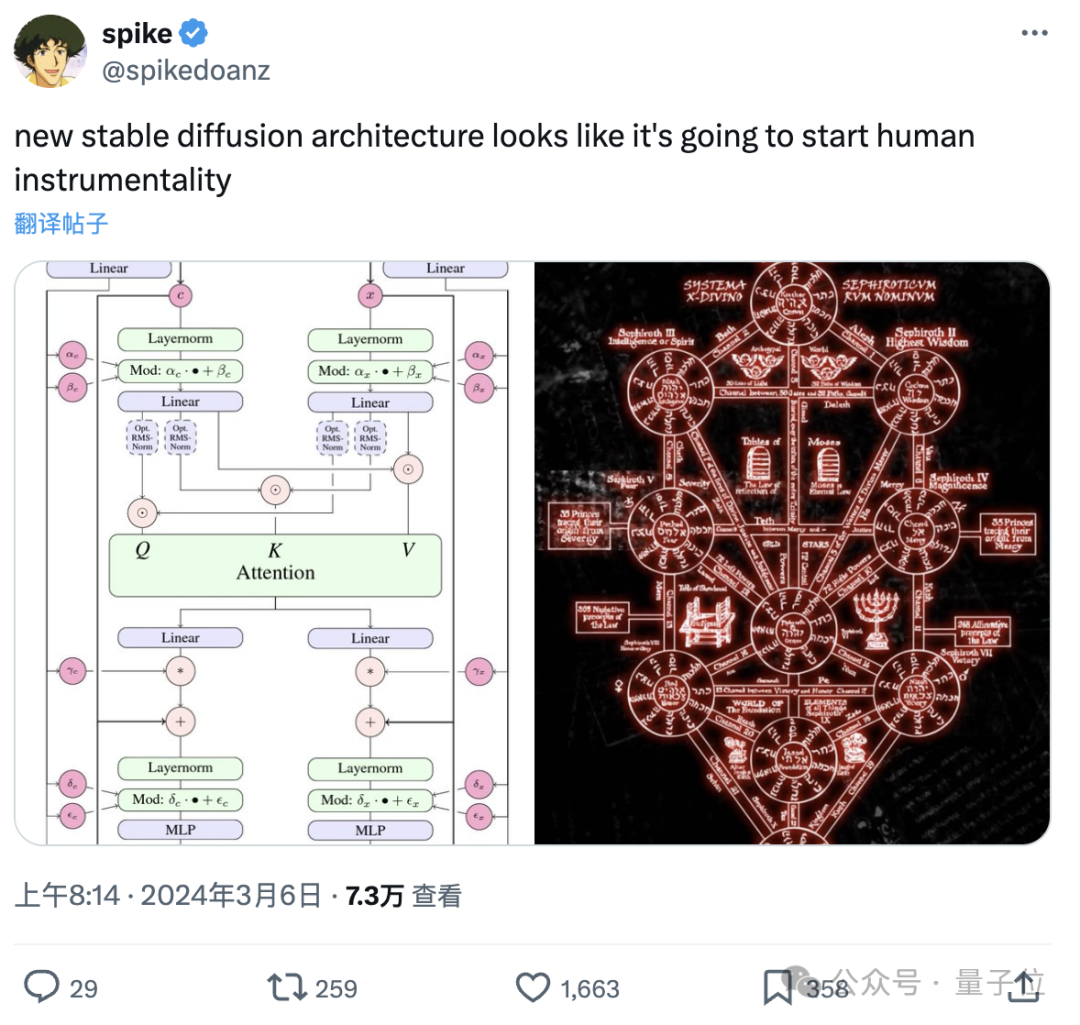
Getting back to the point, as shown in the figure above, this is equivalent to having two independent transformers for each modality, but the Their sequences are concatenated for attentional operations.
This way both representations can work in their own space while still taking the other into account.
Ultimately, through this method, information can "flow" between images and text tokens, improving the model's overall understanding and text rendering capabilities during output.
And as shown previously, this architecture can be easily extended to video and other modes.

Specific tests show that MMDiT is better than DiT out of DiT:
It has both visual fidelity and text alignment during the training process. Better than existing text-to-image backbones, such as UViT and DiT.
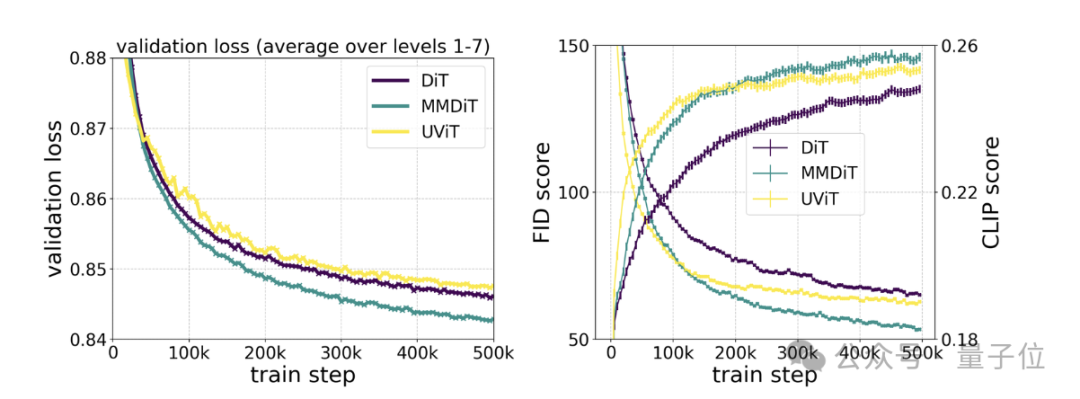
Reweighted flow technology to continuously improve performance
At the beginning of the release, in addition to the diffusion Transformer architecture, the official also revealed that SD3 incorporates flow matching.
What "flow"?
As revealed in the title of the paper released today, SD3 uses "Rectified Flow" (RF).

This is an "extremely simplified, one-step generation" new diffusion model generation method, which was selected for ICLR2023.
It enables the model's data and noise to be connected in a linear trajectory during training, resulting in a more "straight" inference path that can use fewer steps for sampling.
Based on RF, SD3 introduces a new trajectory sampling during the training process.
It focuses on giving more weight to the middle part of the trajectory, because the author assumes that these parts will complete more challenging prediction tasks.
Testing this generation method against 60 other diffusion trajectory methods (such as LDM, EDM and ADM) across multiple datasets, metrics and sampler configurations found:
While the previous RF Methods show good performance in few-step sampling schemes, but their relative performance decreases as the number of steps increases.
In contrast, the SD3 reweighted RF variant consistently improves performance.
The model capability can be further improved
The official conducted a scaling study on text-to-image generation using the reweighted RF method and MMDiT architecture.
Trained models range from 15 modules with 450 million parameters to 38 modules with 8 billion parameters.
They observed from this: As the model size and training steps increase, the validation loss shows a smooth downward trend, that is, the model adapts to more complex data through continuous learning.
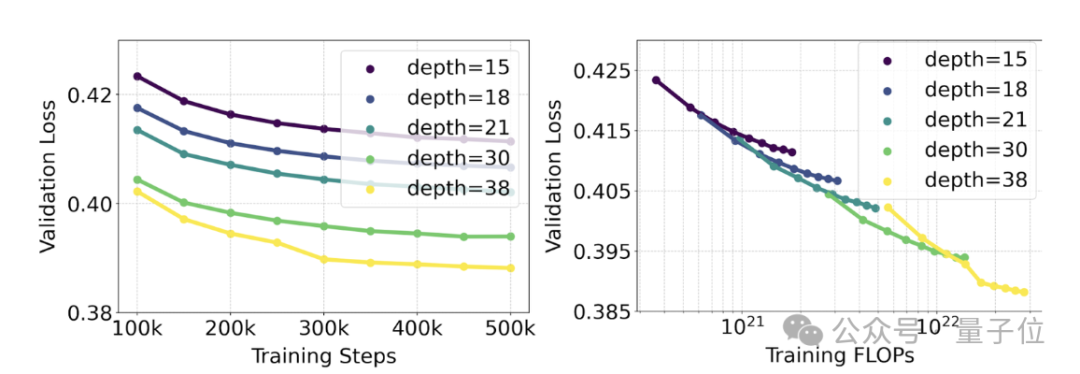
To test whether this translated into more meaningful improvements in model output, we also evaluated the automatic image alignment metric (GenEval) as well as humans Preference Rating (ELO) .
The result is:
There is a strong correlation between the two. That is, verification loss can be used as a very powerful indicator to predict overall model performance.
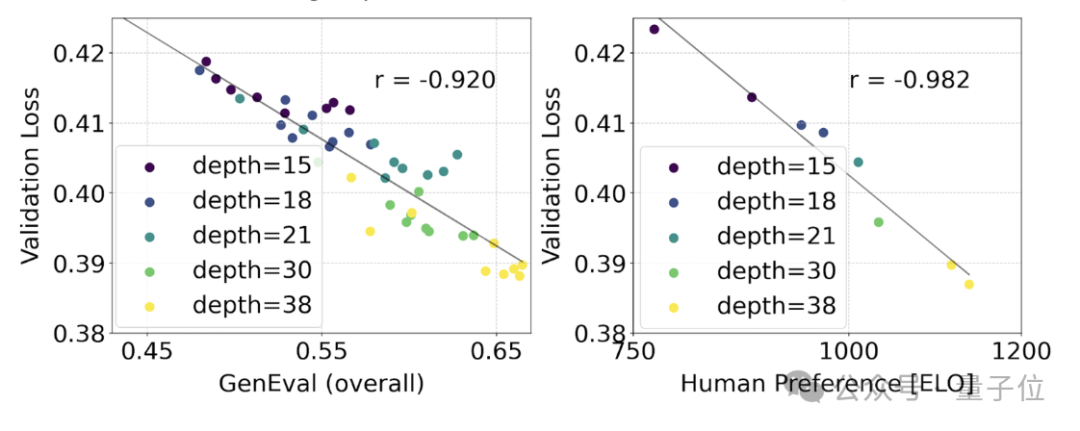
In addition, since the expansion trend here shows no signs of saturation (that is, as the model size increases, the performance is still improving and has not reached its limit), the official is optimistic Said:
The performance of SD3 can continue to improve in the future.
Finally, the technical report also mentions the issue of text encoders:
By removing the 4.7 billion parameter, memory-intensive T5 text encoder used for inference, the memory requirements of SD3 can be significantly reduced Reduced, but at the same time, the performance loss is very small (win rate dropped from 50% to 46%).
However, for the sake of text rendering capabilities, officials still recommend not to remove T5, because without it, the win rate of text representation will drop to 38%.
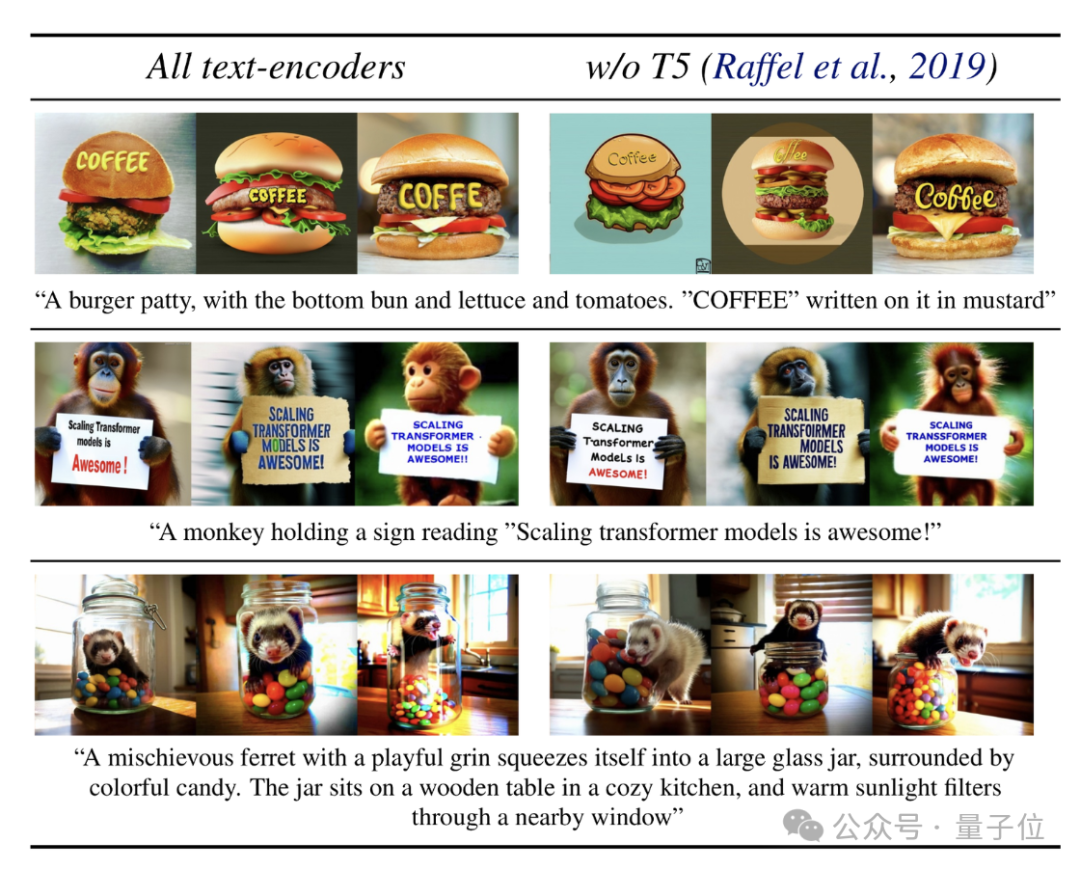
So to summarize: among the three text encoders of SD3, T5 makes the greatest contribution when generating images with text (and highly detailed scene description images) .
Netizens: The open source commitment has been fulfilled as scheduled, thank you
As soon as the SD3 report came out, many netizens said:
Stability AI’s commitment to open source has been fulfilled as scheduled. It's a pleasure and I hope they can continue to operate for a long time.

There are still people who have just announced the name of OpenAI:

What’s even more gratifying is that there are people who are The comment area mentioned:
All the weights of the SD3 model can be downloaded. Currently, 800 million parameters, 2 billion parameters and 8 billion parameters are planned.


How is the speed?
Ahem, the technical report mentioned:
8 billion SD3 takes 34s to generate a 1024*1024 image on a 24GB RTX 4090 (50 sampling steps)——But this is just an early preliminary inference test result without optimization.
Full text of the report: https://stabilityai-public-packages.s3.us-west-2.amazonaws.com/Stable Diffusion 3 Paper.pdf.
Reference link:
[1]https://stability.ai/news/stable-diffusion- 3-research-paper.
[2]https://news.ycombinator.com/item?id=39599958.
The above is the detailed content of Stable Diffusion 3 technical report released: revealing the same architecture details of Sora. For more information, please follow other related articles on the PHP Chinese website!

Hot AI Tools

Undresser.AI Undress
AI-powered app for creating realistic nude photos

AI Clothes Remover
Online AI tool for removing clothes from photos.

Undress AI Tool
Undress images for free

Clothoff.io
AI clothes remover

Video Face Swap
Swap faces in any video effortlessly with our completely free AI face swap tool!

Hot Article

Hot Tools

Notepad++7.3.1
Easy-to-use and free code editor

SublimeText3 Chinese version
Chinese version, very easy to use

Zend Studio 13.0.1
Powerful PHP integrated development environment

Dreamweaver CS6
Visual web development tools

SublimeText3 Mac version
God-level code editing software (SublimeText3)

Hot Topics
 1386
1386
 52
52
 I Tried Vibe Coding with Cursor AI and It's Amazing!
Mar 20, 2025 pm 03:34 PM
I Tried Vibe Coding with Cursor AI and It's Amazing!
Mar 20, 2025 pm 03:34 PM
Vibe coding is reshaping the world of software development by letting us create applications using natural language instead of endless lines of code. Inspired by visionaries like Andrej Karpathy, this innovative approach lets dev
 Top 5 GenAI Launches of February 2025: GPT-4.5, Grok-3 & More!
Mar 22, 2025 am 10:58 AM
Top 5 GenAI Launches of February 2025: GPT-4.5, Grok-3 & More!
Mar 22, 2025 am 10:58 AM
February 2025 has been yet another game-changing month for generative AI, bringing us some of the most anticipated model upgrades and groundbreaking new features. From xAI’s Grok 3 and Anthropic’s Claude 3.7 Sonnet, to OpenAI’s G
 How to Use YOLO v12 for Object Detection?
Mar 22, 2025 am 11:07 AM
How to Use YOLO v12 for Object Detection?
Mar 22, 2025 am 11:07 AM
YOLO (You Only Look Once) has been a leading real-time object detection framework, with each iteration improving upon the previous versions. The latest version YOLO v12 introduces advancements that significantly enhance accuracy
 Best AI Art Generators (Free & Paid) for Creative Projects
Apr 02, 2025 pm 06:10 PM
Best AI Art Generators (Free & Paid) for Creative Projects
Apr 02, 2025 pm 06:10 PM
The article reviews top AI art generators, discussing their features, suitability for creative projects, and value. It highlights Midjourney as the best value for professionals and recommends DALL-E 2 for high-quality, customizable art.
 Is ChatGPT 4 O available?
Mar 28, 2025 pm 05:29 PM
Is ChatGPT 4 O available?
Mar 28, 2025 pm 05:29 PM
ChatGPT 4 is currently available and widely used, demonstrating significant improvements in understanding context and generating coherent responses compared to its predecessors like ChatGPT 3.5. Future developments may include more personalized interactions and real-time data processing capabilities, further enhancing its potential for various applications.
 Best AI Chatbots Compared (ChatGPT, Gemini, Claude & More)
Apr 02, 2025 pm 06:09 PM
Best AI Chatbots Compared (ChatGPT, Gemini, Claude & More)
Apr 02, 2025 pm 06:09 PM
The article compares top AI chatbots like ChatGPT, Gemini, and Claude, focusing on their unique features, customization options, and performance in natural language processing and reliability.
 How to Use Mistral OCR for Your Next RAG Model
Mar 21, 2025 am 11:11 AM
How to Use Mistral OCR for Your Next RAG Model
Mar 21, 2025 am 11:11 AM
Mistral OCR: Revolutionizing Retrieval-Augmented Generation with Multimodal Document Understanding Retrieval-Augmented Generation (RAG) systems have significantly advanced AI capabilities, enabling access to vast data stores for more informed respons
 Top AI Writing Assistants to Boost Your Content Creation
Apr 02, 2025 pm 06:11 PM
Top AI Writing Assistants to Boost Your Content Creation
Apr 02, 2025 pm 06:11 PM
The article discusses top AI writing assistants like Grammarly, Jasper, Copy.ai, Writesonic, and Rytr, focusing on their unique features for content creation. It argues that Jasper excels in SEO optimization, while AI tools help maintain tone consist



